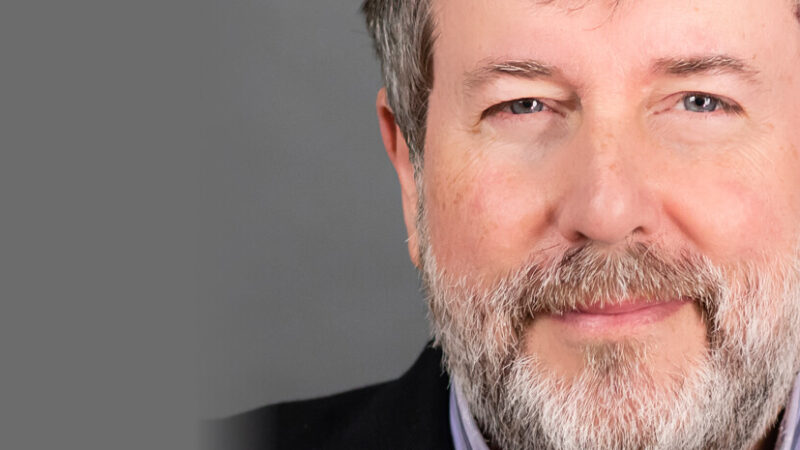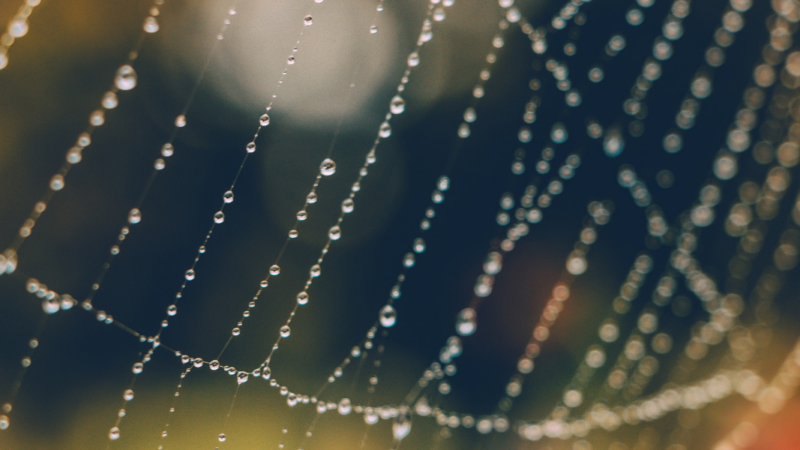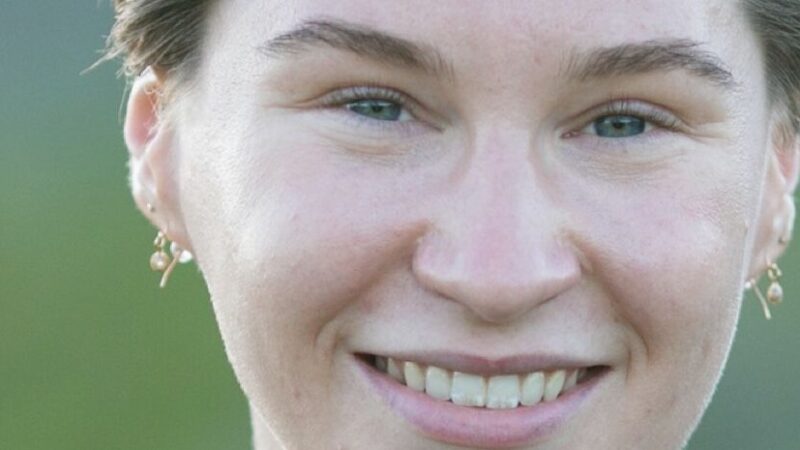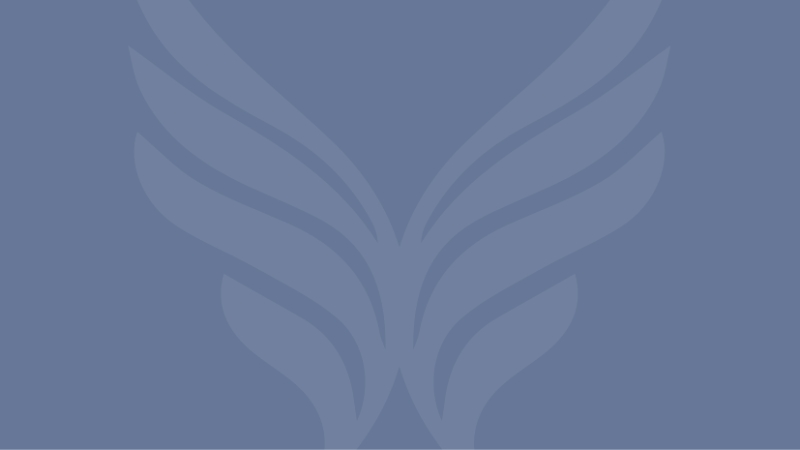-
E117: The Real Work: Letting Go from Within
Michael Singer — October 2, 2025
True spirituality isn’t about mystical experiences or lofty ideals—it’s about honestly facing...
-
Once More: Reflections on Reincarnation and the Gap Between Lives
Tami Simon — September 26, 2025
In this special reflection episode of Insights at the Edge host Tami Simon looks back on her...
-
Honey Tasting Meditation: Build Your Relationship with Sweetness
There is a saying that goes “hurt people hurt people.” I believe this to be true. We have been...
Written by:
Amy Burtaine, Michelle Cassandra Johnson
-
Many Voices, One Journey
The Sounds True Blog
Insights, reflections, and practices from Sounds True teachers, authors, staff, and more. Have a look—to find some inspiration and wisdom for uplifting your day.
Standing Together, and Stepping Up
Written By:
Tami Simon -
The Michael Singer Podcast
Your Highest Intention: Self-Realization
Michael Singer discusses intention—"perhaps the deepest thing we can talk about"—and the path to self-realization.
This Week:
E116: Doing the Best You Can: The Path to Liberation -
Many Voices, One Journey
The Sounds True Blog
Insights, reflections, and practices from Sounds True teachers, authors, staff, and more. Have a look—to find some inspiration and wisdom for uplifting your day.
Take Your Inner Child on Playdates
Written By:
Megan Sherer
600 Podcasts and Counting...
Subscribe to Insights at the Edge to hear all of Tami's interviews (transcripts available, too!), featuring Eckhart Tolle, Caroline Myss, Tara Brach, Jack Kornfield, Adyashanti, and many more.
Most Recent
Russ Hudson: The Enneagram: Nine Gateways to Presence
Russ Hudson is one of the world’s foremost teachers and developers of the Enneagram personality typology system, having coauthored (with Don Richard Riso) five bestselling books on the subject. With Sounds True, Russ has created an 11-CD audio-learning program called The Enneagram: Nine Gateways to Presence. In this podcast, Tami Simon speaks with Russ about the original purpose of the Enneagram, how our personality types are linked to a deeper level of awareness, and how we can use the Enneagram system to continually discover that we are much more than we may habitually think. They also discuss accessing the gifts of our personality types while avoiding the associated pitfalls or “fixations” of any given type, an overview of each of the nine types, Russ’ guidance in determining your own type, and much more.
Poetic Mindset Tip: Your Awe Can Be Connective
POETIC MINDSET TIP: YOUR AWE CAN BE CONNECTIVE
Try applying a mentality of awe when you’re interacting with someone who lives a life very different from yours. Let your awe be the inspiration for a connection. How did they come to believe something that makes you so uncomfortable? What is the root of their behavior? Maybe this person has a dissimilar political view. Maybe they live in a rural town, and you live in a city. Maybe they grew up practicing a particular religion, and you didn’t. These are the big facts that surround the difference between you, but maybe this contrast can be intriguing instead of off-putting? When I find myself on a disparate page from someone else, I try not to close up. I try to lean in to discovery. It’s frequently these occasions that surprise me the most and give me new insight.
When I let myself stay curious about another person’s point of view instead of shutting down, I’m challenged to see with a new lens—and that feels creative. What would I have overlooked if I hadn’t led with a sense of reverential respect? For example, through Poem Store, I developed very unlikely friendships that are still a huge part of my life.
From a familial bond with a timber baron to a deep camaraderie with a wealthy businessman, I found myself open to all kinds of folks I might normally shut out if I weren’t in the mode of poetic openness.
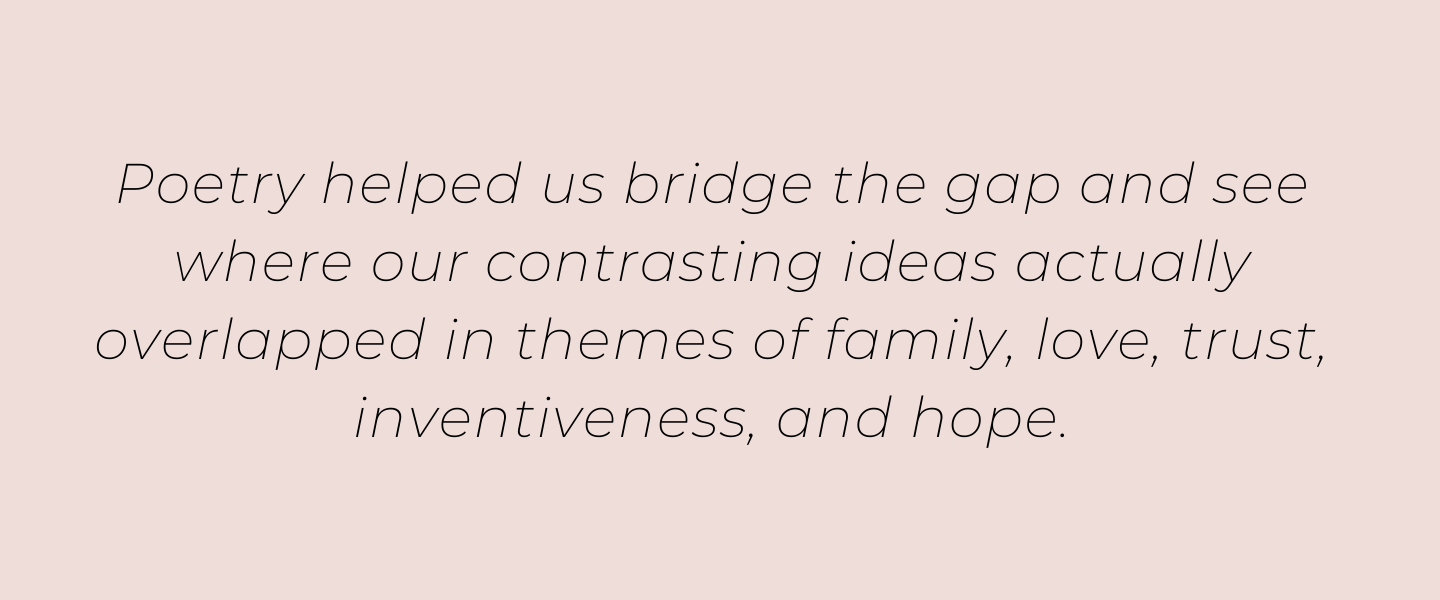
These relationships continue to teach me how to develop compassionate language and an availability for dialogue that focuses on similarities, respect, and humanity, as opposed to difference, disdain, and judgment.
Letting your interest in a person’s inner world outweigh your differences could have unifying results. Awe is often the key to the similarities we all share. It’s our curiosity that links us, and these connections can cause the largest transformations.
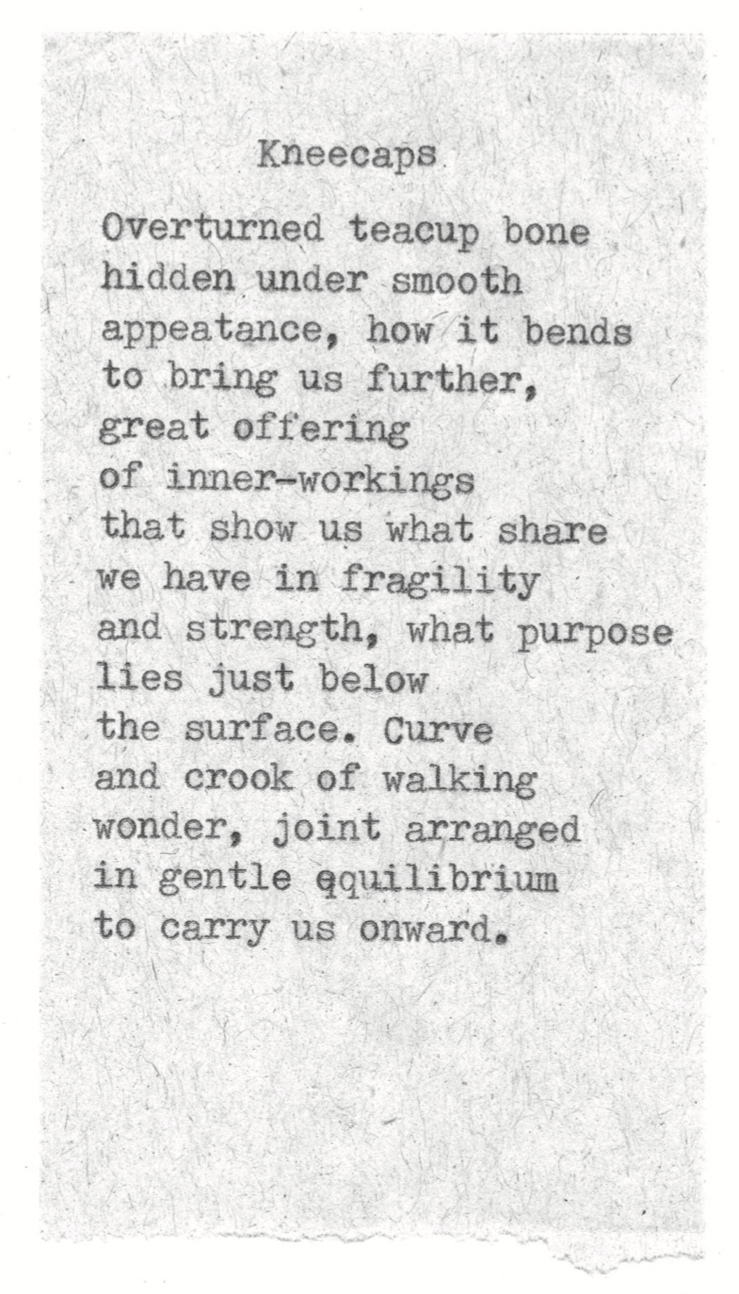
Housemates
Pierre Talón lives
in the kitchen,
close to the kettle
with an invisible web.
His brothers and sisters
share the same name.
Long glass-like legs
and dark teardrop bodies.
Penelope is on the front porch,
blending with the potted plant,
her green abdomen longer each day,
her hind legs like mechanical armor.
Pierre Talón catches the flies
and Penelope reminds me
to pause, peering between blossoms.
The spider never leaves, just changes
corners and sizes, and dodges the steam
when I make tea. The grasshopper
greets me for months, until one day
she sheds her skin and leaves me
with a perfect paper version of herself.
This is an excerpt from Every Day Is A Poem: Find Clarity, Feel Relief, and See Beauty in Every Moment by Jacqueline Suskin.
 Jacqueline Suskin has composed over forty thousand poems with her ongoing improvisational writing project, Poem Store. She is the author of six books, including Help in the Dark Season. Her work has been featured in the New York Times, the Atlantic, and Yes! magazine. She lives in Northern California. For more, see jacquelinesuskin.com.
Jacqueline Suskin has composed over forty thousand poems with her ongoing improvisational writing project, Poem Store. She is the author of six books, including Help in the Dark Season. Her work has been featured in the New York Times, the Atlantic, and Yes! magazine. She lives in Northern California. For more, see jacquelinesuskin.com.
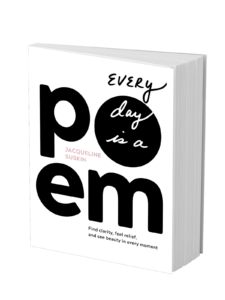
Sounds True | Amazon | Barnes & Noble | Indiebound | Bookshop
Lauren Geertsen: Cutting the Strings of the Invisible ...
Lauren Geertsen is a body connection coach, intuitive mentor, and nutritional therapy practitioner. With Sounds True, Lauren has published a book titled The Invisible Corset: Break Free from Beauty Culture and Embrace Your Radiant Self. In this episode of Insights at the Edge, Tami and Lauren discuss how we can shift from trying to dominate and control our bodies, to entering into a state of true body partnership. They explore the many layers of history and culture that have led us into our current paradigm of ownership over women’s bodies, both the obvious ways in which the beauty industry emphasizes appearance, as well as more deeply embedded and insidious societal messages. Lauren also breaks down the five key “strings” that keep the invisible corset in place, helping women recognize their own internalized oppression. Finally, Tami and Lauren talk about the power of intuition, and how taking off their corsets allows women to access their natural intuitive capacities as bodily awake, intelligent beings.
Customer Favorites
Henry Grayson: Your Self-Healing Power
Henry Grayson, PhD, is a psychotherapist, public speaker, and the author of such books as Changing Approaches to the Psychotherapies and The New Physics of Love. With Sounds True, he has published his newest book, Your Power to Heal: Resolving Psychological Barriers to Your Physical Health. In this episode of Insights at the Edge, Tami Simon talks with Henry about how our beliefs and cultural conditioning may affect our long-term health. Henry discusses how identifying our subconscious limiting narratives can help us embrace our own self-healing capabilities. Tami and Henry also speak on methods of pulling ourselves out of entrenched conditioning and seven steps for identifying what might be underlying physical symptoms. Finally, Henry shares a practice for approaching and eventually getting clear of a limiting personal belief. (69 minutes)
Robert Augustus Masters: The Depthless Depth of Shadow...
Robert Augustus Masters is an integral psychotherapist and author whose works include To Be a Man, Emotional Intimacy, and Spiritual Bypassing. Most recently, he teamed with Sounds True to publish Bringing Your Shadow Out of the Dark: Breaking Free from the Hidden Forces That Drive You. In this illuminating episode of Insights at the Edge, Tami Simon speaks with Robert about the influence of the shadow side of the psyche—especially Robert’s own encounters with it. Robert describes his experiences as the leader of a psychospiritual community that gradually transformed into a cult, including the near-death experience that forced him to confront the reality of his actions and change his life. Tami and Robert also talk about the powerful influence of shame, as well as the important differences between anger and aggression. Finally, they discuss the desire to place spiritual guides on pedestals and what we can do to address the difficult aspects of student-teacher relationships. (63 minutes)
Tami’s Takeaway: One of the ways that Robert Augustus Masters describes our personal shadow is that it contains experiences of wounding and early conditioning that we have yet to face. How do we know what we haven’t yet faced? Robert teaches that one of the best ways we can start to identify our shadow is to pay careful attention to moments of reactivity (we all know what those feel like) and then ask, “How old do I feel in this moment?” By entering the pain of these early disowned experiences, we start the hard task that Robert calls “illuminating the shadow,” a great life work that is endlessly deep and endlessly liberating.
The Awesome Human Project
Nataly Kogan is an entrepreneur, speaker, and author on a mission to help people cultivate their “Awesome Human” skills by making simple, scientifically backed practices part of their daily lives. The author of the books Happier Now and The Awesome Human Project, she has appeared in hundreds of media outlets, including the New York Times, the Wall Street Journal, TEDxBoston, SXSW, and the Harvard Women’s Leadership Conference. In this podcast, Sounds True founder Tami Simon speaks with Nataly about how we can live in a way that enables us to thrive while we give all of our gifts. They also discuss developing the five skills of emotional fitness; the practice of “struggle awareness” when faced with a challenge; overcoming the brain’s negativity bias, and the art of “courageously talking back to our brains” with kindness and compassion; the five traits of the Awesome Human; a leader as someone who positively impacts another person’s ability to flourish; sharing your emotional “whiteboard” to support the best possible interactions with others; the concept of “surface acting” at work and how it contributes to burnout; investing in a daily check-in with yourself; the power of self-compassion and self-acceptance; self-care as the skill of fueling your emotional, mental, and physical energy; and connecting to your “bigger why.”

